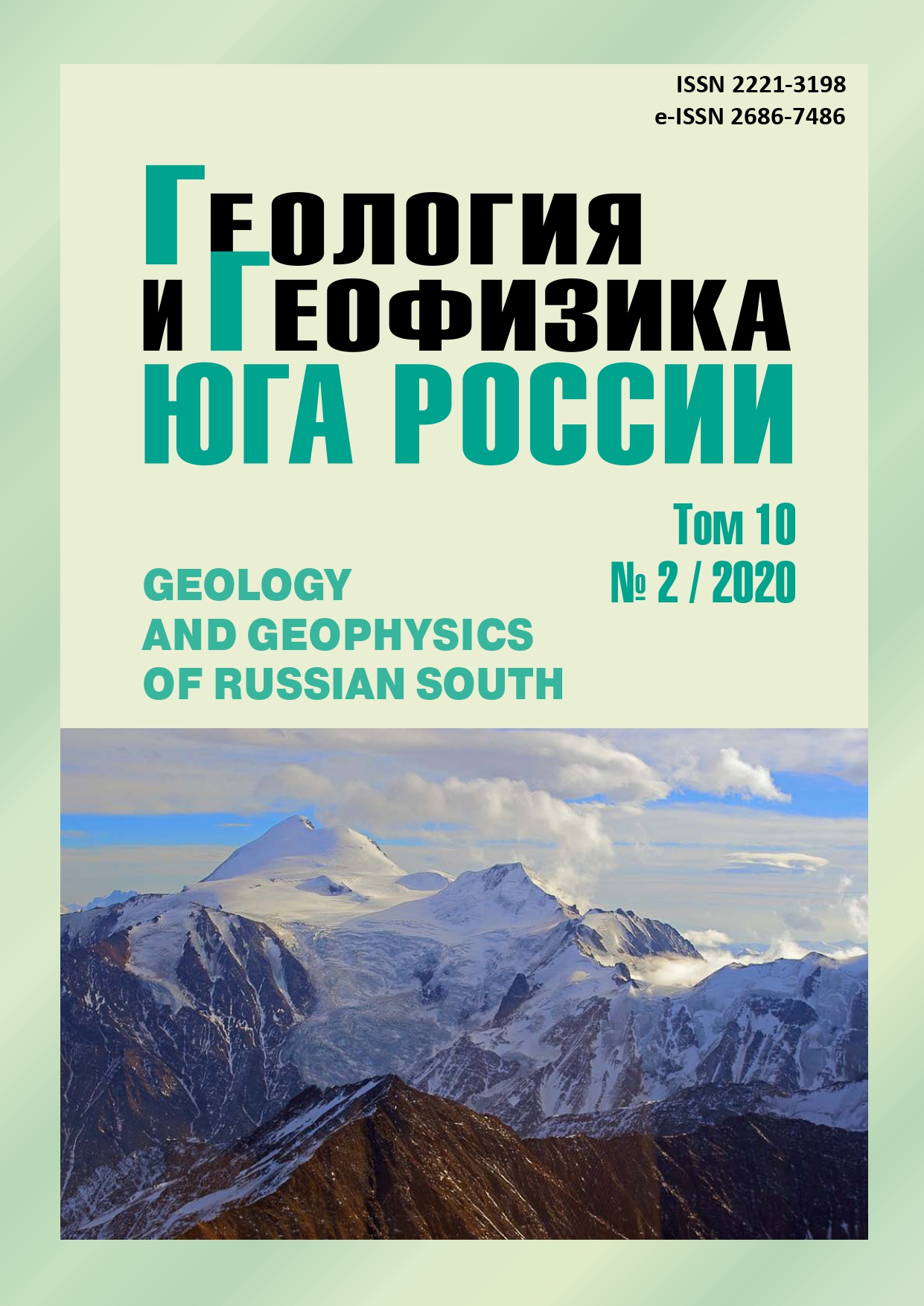Accessory chrome spinels of serpentinites of tectonic melange of the Dakhov uplift (Greater Caucasus)
Abstract
Relevance. Features of the morphology and composition of chrome spinels are important for solving a number of geological problems: from reconstructing the composition of the substrate of the initial melts and the physicochemical conditions of their evolution, establishing the confinement of magmatic complexes to geodynamic settings, and assessing the mineralogenic potential of ultrabasite massifs. Aim. Studying of accessory chrome spinels from serpentinites of tectonic melange on the northern flank of the Dakhovsky crystalline protrusion, which is part of the tectonic zone of the Front range of the Greater Caucasus, identify the chromium spinels that retained their original composition and determination the conditions of their formation. Methods. Electron probe microanalysis and electron microscopy, statistical analysis of measurement results. Results. Groups of grains with secondary changes and groups that retained the original composition have been distinguished. During the serpentinization of ultrabasites accompanying the obduction (with the formation of lysardite-chrysotile association), chrome spinels partially transformed from subferrichromites to chromites, it was accompanied by a redistribution of aluminum and magnesium (and enrichment of the inner zones with chromium) in a significant part of the grains and it is generally typical for conditions of low-temperature metamorphism. These changes are typical in the formation of external zones enriched with aluminum (Al2O3 more than 9 wt.%) and its removal from the internal parts (where the Al2O3 content is uneven – from variations within the grain in the range of 4.5-9 wt.% to less than 2% wt.% In greatly modified differences). The transition to Cr-enriched spinel and an analysis of the correlation between the elements indicate the predominance of the divalent form of iron in the fluids, which is typical for reducing conditions and a high fluid / rock ratio. Subsequent changes can be seen in the formation of magnetite rims under oxidizing conditions during intensive filtration of high-temperature hydrothermal solutions in serpentinites. This final stage of the transformation of chrome spinels should be associated with the end of the Hercynian collision stage, when fragments of apogiperbasite bodies torn from the ophiolite melange were attached to the edge of the Dakhov block of the crystallinum, intensively deployed and broken through by small intrusions of the final phase of granitoid magmatism. Intensive crushing and circulation of solutions can be seen in the formation of several generations of magnetite, forming thin intersecting streaks in serpentinite. The primary composition of chrome spinels (corresponding to subferrochromites, Cr# 0.80-0.81) indicates their proximity to the type of ophiolites of supra- or suprasubduction zones (SSZ), in particular, to harzburgite ophiolites of the frontal parts of island arcs, ultrabasites of which are formed under conditions of melting of the deplicated harzburgite mantle.


